County Line Kitchen Cold Brew Coffee Maker In-depth Review
County Line Kitchen Cold Brew uses a mason jar for their cold brew coffee maker. Find out if this versatile device is our best cold brew coffee maker.

Overall Verdict
There are many things to like about the County Line Kitchen cold brew coffee maker. The design is very practical and we like how the brewer brings out sweeter profiles.
However, the compromise is the filter which is not the most effective. Our conclusion is that the County Line Kitchen brewer has its advantages, but we recommend brewing for longer than 18 hours with additional decanting or refiltering.
Things We Like
- Versatile product
- Minimal packaging
- Packed and shipped in the US
- Robust and durable
- Airtight silicone gasket
Things We Don’t Like
- Brew strength average
- Filter not so effective
This County Line Kitchen cold brew coffee maker is a popular mason jar brewer that comes in both 1-quart and 2-quart sizes. You can also choose between a screwable flip cap lid with or without a handle. Plus, there are color options to suit your fancy.
These items, the stainless steel mesh filters, and an additional stainless steel lid can also be purchased separately. The jar is made completely airtight using a silicone seal.
We purchased the 1-quart jar and put County Line Kitchen through our rigorous tests to see how it measured up against numerous other 1-quart brewers.
Key Specs
Where to Buy Price at publication $24.82
*You help support HealthyKitchen101's product testing and reviews by purchasing from our retail partners.
Compared to Other Cold Brew Coffee Makers
7.8 Brew Quality
We found the brew quality of the County Line Kitchen cold brew coffee maker to be promising. It did well to bring out sweet profiles, but at the same time, the brew lacked complexity. We recommend brewing for longer than our test standard of 18 hours. The amount of sediment indicated that the filter was not so effective, but nonetheless a good compromise on the brew quality.
7.5 Bouquet
The County Line Kitchen mason jar brewer produced, at a best, a medium-strength bouquet. We detected a slight nuttiness as well as more subtle sweet notes. The results were not as good as we had hoped for, but promising nonetheless.
8.0 Drinkability

We diluted the concentrate with one part coffee to one part filtered water. It had a dominant roasted flavor, but with a slight sweet aftertaste. The drink lacked nutty and fruity flavors that our top brewers were more successful at producing. Although smooth to drink, it lacked body and was not as satisfying as a cold brew can be.
7.0 Sediment
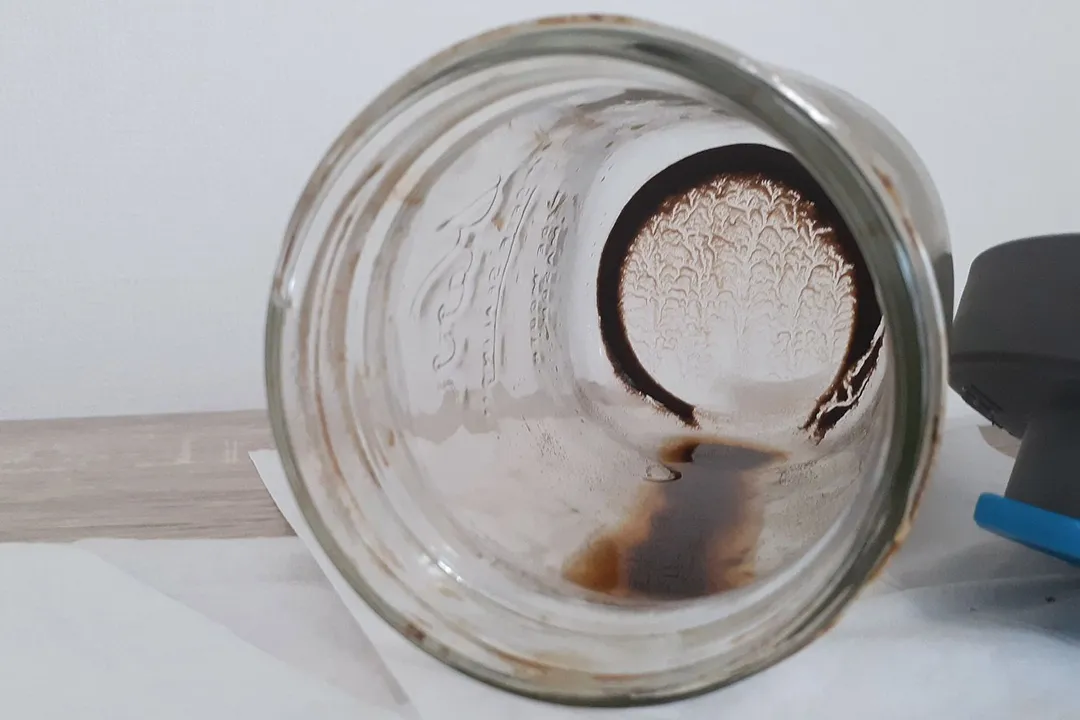
We brewed according to the County Line Kitchen manual’s instructions. This means we did not shake the vessel before putting it in the refrigerator. After allowing the brew to settle and then decanting, we were surprised to see a relatively significant amount of sediment.
The filter is a rough mesh rather than a laser-cut stainless steel filter as seen in other types of brewers. Although this brewer did better than average in producing a sweeter brew, we suggest additional decanting to remove excess sediment. Either that, or run the coffee through a paper filter.
9.6 Design
The County Line Kitchen cold brew coffee maker is a practical design which captures the aesthetic of a traditional homestead. The screw-top lid can be purchased with or without a handle. The flip lid is very convenient and pours well. The brewer is airtight with a silicone seal, and you can also fit the mason jar with a traditional metal screw cap.
In the Box

- Assembled unit
- Warranty card
- User brochure manual
The County Line Kitchen 1-quart cold brew coffee maker comes in a really neat box. There’s no superfluous packaging and zero disposable plastics. The brewer comes fully assembled and the brochure outlines six easy steps to brewing and three suggested serving recipes. The warranty card directs you to their website to register your product, after which they provide a sales support email. There’s no QR code, so you have to do it the old-fashioned way.
Decanter

The brew decanter is just as robust as any mason jar. The inner lid has a silicone gasket for a perfect seal. A handy notch lets you easily pluck the gasket out for cleaning. When sealed, even if you shake the jar around, no liquid spills and the flip cap stays secure too.
10 Stopper / Lid
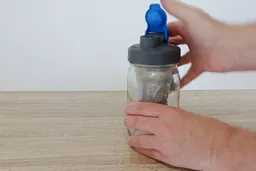
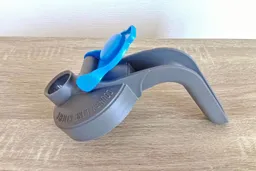

The lid of the County Line consists of three parts. The handle is molded onto the crew-top lid. The handle is easy to grip with an inner thumb groove. To pour the liquid, you simply clip the flip-lid open which also detaches for easy cleaning. Inside the lid is also a gasket for airtight sealing. Although the handle is convenient, you can also opt for a simple screw top without a handle for a more compact option.
9.0 Filter
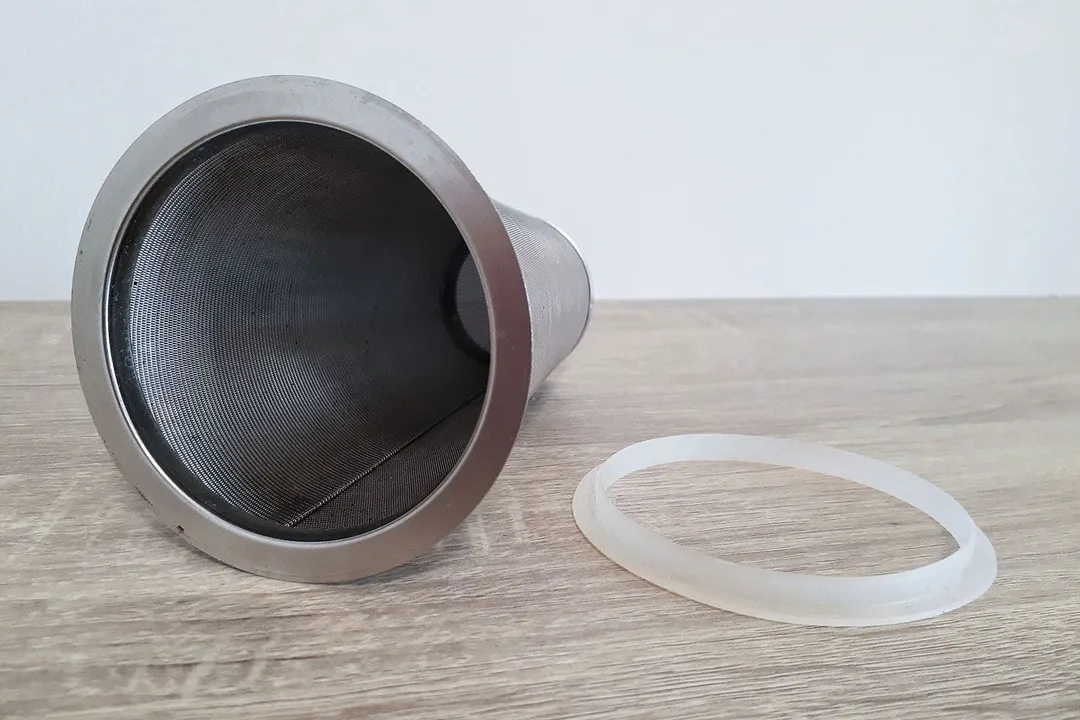
Compared to other stainless steel filters we’ve examined, the County Line Kitchen’s looks and feels heavier. It matches the sturdy solidity of the mason jar and adds to its old-fashioned country feel. Although a fair bit of sediment is produced, our tests revealed that the brew produced is relatively good quality.
10 Build Quality

It’s difficult not to like the design of the County Line Kitchen cold brew coffee maker. If you like the solid practicality of a mason jar, it fits the bill. The part count is minimal and all components fit well. We also appreciate the option of buying a lid with or without a handle.
9.2 Ease of Use
Brewing with the County Line Kitchen is very easy and straightforward. It’s not necessary to weigh or measure either grounds or water. Just fill the filter and jar as described below.
Although decanting is just a question of removing the filter, its lower level of filtration means you may want to refilter or further decant the contents. For the 1-quart jar, we had to use a bottle brush to scrub it out.
10 Brewing

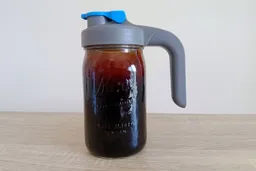
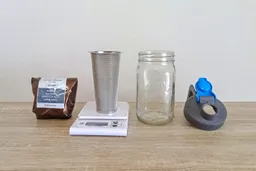
Brewing follows six easy steps. Simply load the filter with coffee grounds — one cup per quart (reaching about one inch from the top) — and place the filter in the jar. Then, you slowly add water until the grounds are completely covered and the water level nears the top of the filter.
Allow to stand for a few minutes while the water makes its way through the grounds. Top up with water as needed, screw on the lid, and place in the fridge to brew. We found this process completely effortless with no need for weighing or measuring.
8.5 Decanting
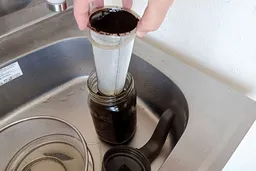

We found the screwable cap may require a little force to remove depending on how tightly you put it on. The filter, though, is easy to grip and remove without any grounds dropping into the vessel. Like similar long-funnel filters, you can always place it in a cup to catch the last few drops. It’s best to rinse the lid of any grounds before replacing and putting the finished brew in your fridge. Because of the amount of sediment produced, we recommend recanting for a second time once the brew has been allowed to settle.
8.5 Cleaning and Storage
For deep cleaning, you need to remove the flip cap and the lid’s inner gasket. The silicone ring seal for the filter simply slides off. The filter rinses out easily and you can use a gentle bottle brush if you wish. We found the small 1-quart jar a little narrow for hand cleaning, so we used a bottle brush there too.
All parts are dishwasher friendly, but it’s probably better to just rinse off the silicone filter seal and lid gasket. You’ll periodically need to soak the filter in a mixture of water and baking soda, vinegar, or citric acid to unclog coffee oils and remove odors.
After brewing, you will need a small space to store the filter. You should place it upside down so the silicone seal stays safe. When you are not using the jar, everything conveniently stores as a single unit.
Behind the review
Roger Shitaki is a writer, author, and editor. His niches are household appliances, health & wellness, and travel. He’s a freelance contributor to a Tokyo lifestyle website and a leading ophthalmology magazine in Asia.
